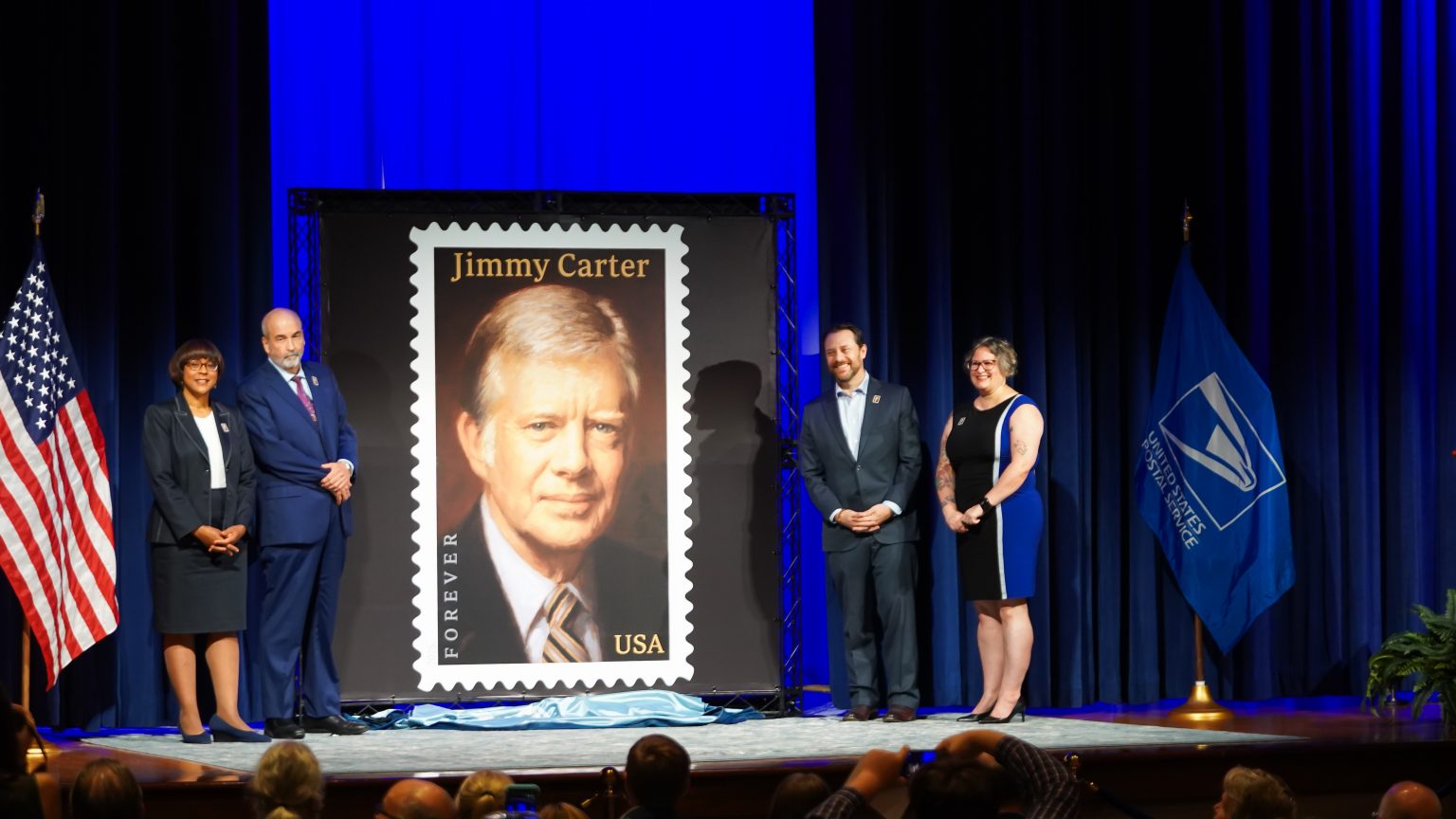On October 1, the Carter Center marked what would have been President Jimmy Carter’s 101st birthday with the unveiling of a U.S. Postal Service Forever Stamp in his honor. The ceremony paid tribute not only to Carter’s global impact but also to the deeply personal rituals that shaped his life.
The stamp, featuring artwork adapted from a 1982 oil painting originally created for Carter’s official White House portrait, symbolizes his enduring presence in American history. For decades, Carter valued handwritten correspondence — postcards, letters, and notes — as a way to connect across distances. This quiet but consistent practice reflected his belief that communication should be meaningful, intentional, and lasting.
The unveiling underscored Carter’s far-reaching legacy. Beyond his time as governor and president, he devoted his post-presidency to humanitarian work, from advancing human rights to spearheading efforts to eradicate Guinea worm disease. A new documentary released alongside the stamp, The President and The Dragon, highlights that mission and reaffirms his role as a global advocate for health and dignity.
The event also reminded attendees of Carter’s influence on Atlanta. His life’s work and the Carter Center’s mission continue to elevate the city’s role as a hub for peace, democracy, and public health. Even amid today’s climate of polarization, the ceremony reflected Carter’s belief that leaders can bring people together and bridge divides.
While the day coincided with the start of a federal government shutdown that temporarily closed the Carter Presidential Library and Carter’s childhood home in Plains, the Forever Stamp offered a symbol of continuity. Just as Carter relied on the written word to guide his journey, the stamp now carries his legacy into the hands and homes of people across the nation.
The dedication ceremony served not just as a celebration of Carter’s life, but as a reminder that his greatest contribution was the enduring example of service, connection, and purpose.
